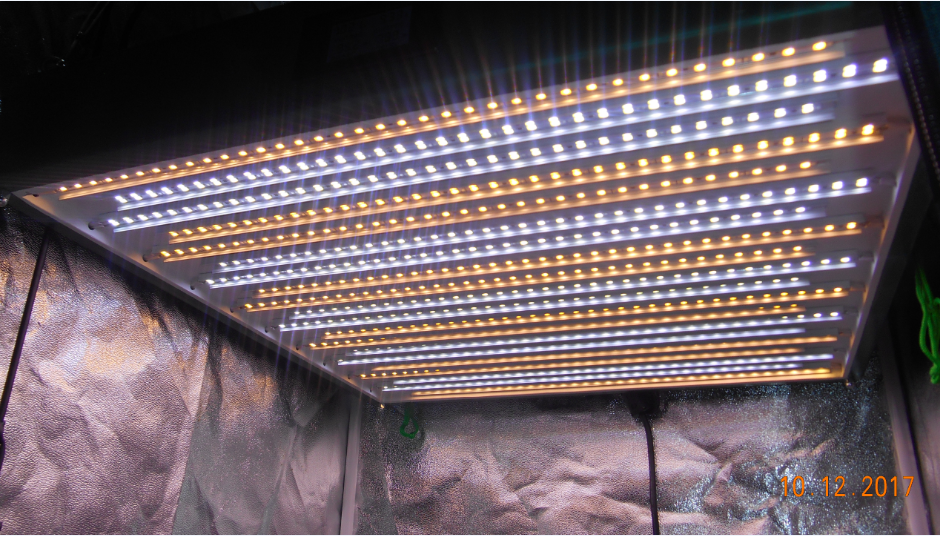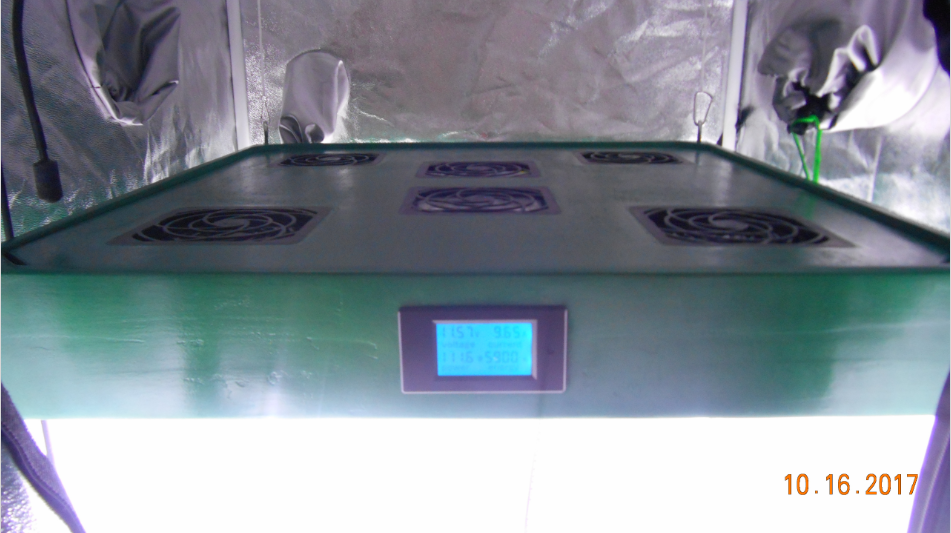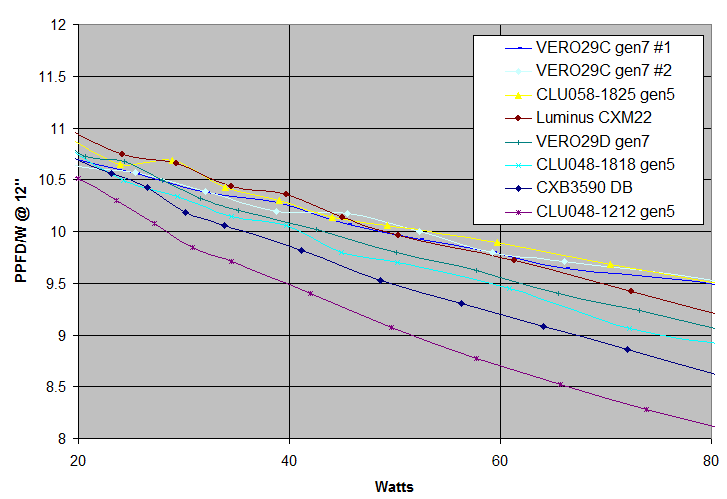PurpleGunRack
Well-Known Member
- Do you want the best technology available?
- Do you want a good light/heat ratio?
- Do you want value for your money?
- Are you tired of companies trying to push sub par tech?
- Would you like honest recommendations for what type/amount of light is best for growing cannabis?
Then keep reading
- Do you want a good light/heat ratio?
- Do you want value for your money?
- Are you tired of companies trying to push sub par tech?
- Would you like honest recommendations for what type/amount of light is best for growing cannabis?
Then keep reading

Building your own LED growlight is not as hard as it seems at first glance, nor do you need to spend countless hours reading up on chips and drivers, watch a few youtube videos and ask around the forum and you'll be up and running in no time.
Just to make it absolutely clear I have no affiliation with any company or any economic interests at stake, I only want YOU to get the best LED grow light possible and at a reasonable price.
Terms you should know, and some you should know to disregard:
LED: Light Emitting Diode.
COB: Chips On Board - A cluster of diodes on a circuit board powered as a single unit.
DIY: Do It Yourself - this is what you're about to do

Watt: Joules per second - Measures how much energy is put into the lamp, the only thing this measures is how much you pay for the light you get!
nm: Nanometer - one billionth of a meter, this is a unit used to define the lightwaves.
CCT: Corrolated Colour Temperature, measured in degrees Kelvin and describes a mixed spectrum of diffenrent nm lightwaves.
You'll see most of these: 2700K, 3000K, 3500K 4000K, 5000K but there are other CCT's available too.
Very simply put: the lower the number the more red, and the higher the number the more blue.
3000K and 3500K are the most recommended for flowering and full cycle.
Lumen: Measures light VISIBLE TO THE HUMAN EYE! 1w green light has way more lumens than 1w red light and plants use very little green light but a lot of red light. So though it actually is almost the same range as PAR, this unit is useless for choosing grow lights!
PAR: Photosynthetically Active Radiation, which just means the lightwaves between 400nm and 700nm, not a unit for measuring.
PPFD: Photosynthetic Photon Flux Density measured in μmol/s (micromoles per second) on a given surface area from a given distance from the light.
The sun will give about 2000 PPFD at high noon in summer, and of course a lot less when the sun is at an angle and on overcast days.
IR, FR, UV: InfraRed, Far Red and UltraViolet respectively, lightwaves in these spectrums(outside the 400nm - 700nm range) create very little photosynthesis, but IR and Far Red contributes to the Emerson Effect and though studies show that UV-B increase resin production, newer studies show that UV-A also has positive effects on plants.
Keep in mind that the sun gives off a lot of these lightwaves, and that a lot of scientific studies on light and plants is still to be done.
There are lot of grey areas and pseudo-science out there...
General advice:
More COB's/boards run soft is always better than a few run hard, the more power you put into a unit, the less efficient it is.
Use Meanwell drivers! The best you can get and 7 year warranty.
If you're on a tight budget, GET HID and save up for a DIY project.
If your apprehensive about fiddling with electronics, try a DIY KIT.
Get the latest generation COB's from: Bridgelux, Luminus, Citizen, Cree, or a board/strip using Samsung 531C S6 Bin diodes.
A grow light should physically cover at least 2/3 of your grow space and it works best if the entire space is evenly covered.
First you need to ask yourself a few questions:
Is the light for veg, bloom or full cycle?
How big a space do you need to cover?
What's your budget?
Is the light for veg, bloom or full cycle?
How big a space do you need to cover?
What's your budget?
Basically to properly flower cannabis you want to cover your entire grow space, corner to corner with at least 800 PPFD, but unless you add CO2 going over 1000 PPFD will give you very little photosynthetical return on the extra power put into producing the extra light!
Even coverage is very important, and while LED companies like to sell small easily shipped panels, you should cover you canopy with light and thus ommit the Inverse Square Law that applies to a single point of light like a bulb or a LED panel.
Having 1500 PPFD just under the light and 200 PPFD at the edge of your space is a poor light distribution and that means you put a lot of watts in that aren't being used by the plants - This is the sort of light distribution you get with a bulb or a single panel.
If you're on a tight budget you should accept that LED is out of you range and get a HID light, cheap LED panels are not cheap in the long run and more expensive than HID up front.
Websites/threads/links worth looking at, some links will be removed by mods so just google it:
LED Gardener: A great source for grow light knowledge and a calcutor to help choose driver(s)
PPFD Graphs and Analysis for Mars, Amare, Fluence LEDs & CMH
Photosynthesis - Wikipedia
Photosynthetically active radiation - Wikipedia
Photosynthetic Environment
Emerson effect - Wikipedia
Kingbrite - LED component vendor on Alibaba, good prices and decent service, make sure you tell them that you have to pay tax of the shipment
 They have DIY kits.
They have DIY kits.Mouser: Electrical component vendor
RS Components: Electrical component vendor
Horticulture Lighting Group (HLG): Manufacturer and vendor of Quantum Boards, DIY kits, and lamps.
Luminus: Manufacturer of COB's, very recommendable if you live in the USA.
...And many more I can't remember or don't know of

These videos by Growmau5 are pure gold:
Edit: It should be noted that the CXB3590 chip Growmau5 recommends was top of the pop when he made the videos. today it's obsolete and better COB's can be bought for less

Feel free to correct me and add to this tome of grow light information, and discuss technology and photosynthesis.
Also please post pictures of your build and/or building process.







